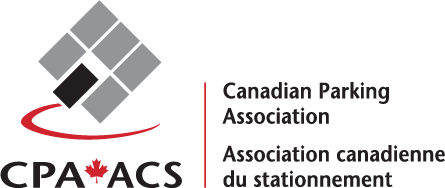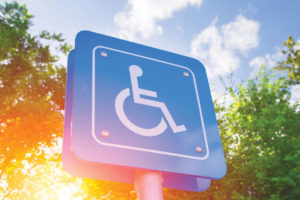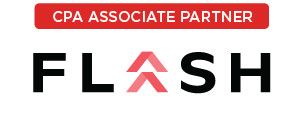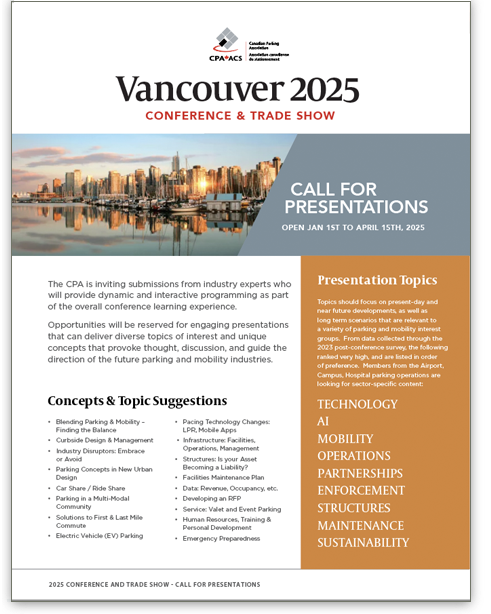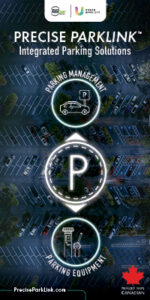By Chelsea Webster, ParkPlus System
The world must be ending; casinos in Las Vegas are making it the norm to charge for parking1. In life, there are very few guarantees – but free parking at a casino in Vegas, or at your neighborhood Walmart, seemed like one of them. No, I’m not saying WalMart is starting to charge for parking (although I will address this opportunity below). But maybe they should.
This article is about the copious amounts of free parking that presents itself at nearly every big box retail store across North America. It’s commonplace, but does it make common sense?
I’m going to propose that Walmart is one of the most iconic, prevalent, and effective of all big box stores. As such, I’ll use them as an example of how most of this type of retailer tackles parking management.
In Calgary, there are 11 Walmart locations. Each of these locations offer roughly the same amount (if not more) of square footage for parking as there is shopping/interior of the building. Here are a few images (thanks Google maps) to illustrate what I’m saying:
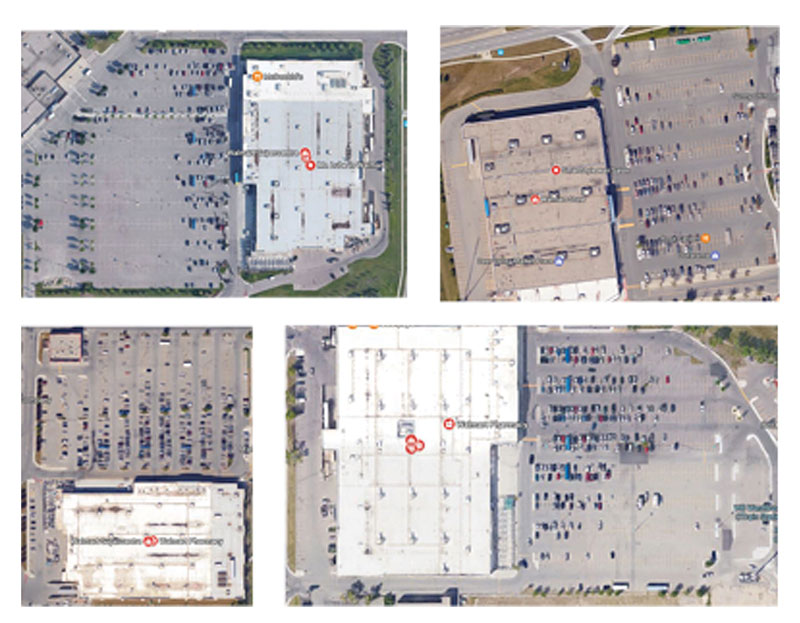
You’ll also notice something else in these images – a LOT of parking stalls without vehicles parked in them. So, why would Walmart, a very savvy retailer, opt to purchase all of that land and designate it for unused parking?
There are several answers to this question, and they vary depending on which location you’re looking at. A few common reasons are:
Mandatory minimums: Some municipalities force builders to include a certain number of parking stalls per square foot of space.
Profit maximization: You’d never want a customer to leave without coming into the store because they couldn’t find parking.
Peak demand: The lot must be able to accommodate every single shopper at the busiest…
By Patricia Kierans, MA Candidate in Critical Disability Studies, York University
We have all seen cars cruising around and around parking lots, looking for the ‘sweet spot’ parking space that will get them closest to their destination. And for accessible parking spots, this pressure is only magnified. The Ontario Building Code (OBC) only requires a minimum of one accessible parking space per every one hundred1. With the number of people with disabilities, and accessibility parking permits, increasing every year, how will parking lot owners rise to the challenge of increased demand for accessible parking?
The percentage of people with disabilities in Canada is increasing at a faster rate than the growth of the general population. Today, approximately 14% of Canadians have a disability that impacts their daily activities, with 80% of those report use of an accessibility aid2. In 2011, Human Resources and Skills Development Canada predicted the annual population growth from 2006 through 2036 would be ~1.3% per year, but the number of people with disabilities will increase by ~2.5% per year3.
The exact concentration of people with disabilities impacting mobility varies greatly across the country. People with disabilities, when possible, migrate toward urban areas seeking better access to specialized medical care, social services, and accessible public transit and buildings. Consequently, urban regions are predicting a major increase in the percentage of people with disabilities. The Peel Region of Ontario, including Brampton, has predicted a general population increase of 38% between 2001 and 2021, but an increase of 75% in the number of people with disabilities4.
While each province within Canada has differing requirements for the percentage of accessible parking spaces required for any parking facility, the ratio of accessible parking spots to regular spots remains extremely low. While all parking lots in Ontario adhere to the OBC’s minimum 1 space per…
By Chelsea Webster & Richard Simpson, ParkPlus System
Procurement
Many in sales might suggest this should be considered a four letter word. Having experienced two sides of this process, I know it can be a great tool and it can be a disaster, for any group involved. My experience is that everyone involved in the development of an RFP has the best of intentions to provide the best value or benefit to the organization.
Fundamentally issues are often created right from the beginning. Depending on your perception you will measure value or benefit in different ways. How is the organization structured? Does it have supply chain management, strategic sourcing and/or procurement departments? How do these departments integrate with the needs of their internal clients, i.e. other departments? How are they measured and compensated?
Do you get what you pay for? I’m not suggesting you have to pay the most to get the best. If you’re buying a widget or commodity item then price might be the best measurement. However when it comes to services or more intangible purchases it becomes very hard to measure. RFPs that are well designed and thoughtfully put together end up being far more constructive for the organization trying to measure what the market is offering and will likely yield better quality responses for review.
As a salesperson, there have been many RFPs that I haven’t responded to purely because the initial document showed the process would be arduous and painful to go through. Ironically it is often the same for the employees trying to manage the process internally, or it is really easy because they have so few responses to review. Does this bring the best value or benefit to the organization? Alternatively, I think we can all agree that sometimes the RFP process is merely for optics, to…
By Giovani Forner, Director of Research and Development
Brazil is widely known for its amazing natural beauties and top soccer players, but now a group of engineers from Porto Alegre wants to place the country as a leader also in the automated parking field. Pioneers in providing innovative products, Engeltec developed a new, complete solution for Valet Parking that is shaking the national market, and now they prepare to cross borders, starting with Canada.
Living in a country similar to Canada with continental dimensions, Brazilians love their cars, even though they have to pay among the highest prices in the world to drive them (due, in large part, to high taxes and low market competition). The National Department of Vehicles in Brazil estimates 93,305,422 are currently running through their roads, a number almost three times higher than in Canada. Turning, as a matter of fact, parking into a valuable and competitive business in the South American country.
And Engeltec’s solution is unique to the whole world. It automates the manual steps of bridging all information into one platform. The valet operator needs less people to do the same function, while receiving fast and reliable information from the software. The result is nothing but profit.
The challenge for the Brazilian company, though, was to automate the maximum steps of check-in with no drivers’ interaction. This means the user experience will be as fast as possible, allowing clients to do more with the same amount of human resources from the valet company. Engeltec engineers spent last year perfecting their prototype and now the first model is already in functioning.
One software, three hardwares
The solution combines a software with three simple hardware devices: an OCR camera, a mini Smart Cube and a Pinpark device.
Here’s how it works
The OCR camera recognizes the license plate. Placed above the car, the…
By Chelsea Webster
Let’s start out with a quick poll:
What model year is your vehicle?
Okay so there was only one respondent, but I think it’s safe to say that with new car sales of 3.8 million in Canada1 and 34.5 million in the US in the last 2 years2, there are a LOT of vehicles on our roads that are a 2014 model year or newer.
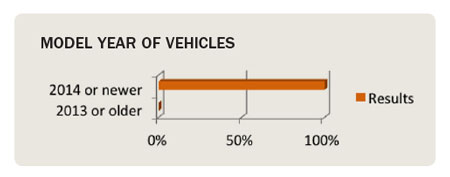
Why does this matter?
Consider this quick rundown of the major car advances to land in our vehicles.
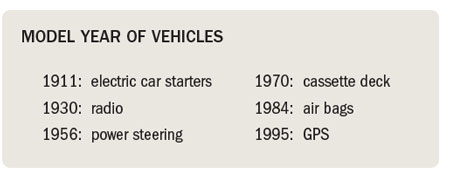
So, now that internet connectivity is showing up in cars, you can see how such a big change is cause for discussion. We’re basically taking the Internet of Things (if this term isn’t familiar, it’s the concept that everything is now connected on the internet – from your home thermostat to your heart rate monitor to the security camera on the street4) and applying it to vehicles. This concept of the fully connected and communicative vehicle is called the Internet of Vehicles (or IoV as we’ll refer to it).
IoV Fundamentals
Overall, the IoV is a massive network of connection points to the internet which are in constant communication. It’s meant to guide and supervise vehicles while providing abundant multimedia and mobile Internet application services. There are several components to understand within IoV, so let’s go over a few details.
Why would we want this? There are four main benefits of IoV5: safety (if you know the car in front of you is stopping, you can brake early); environmental damage mitigation (use less horsepower to reduce emissions); energy conservation (maximize efficiency in gas consumption); and intelligent communication (avoid a traffic jam, construction, or pay for parking).
Who is the car communicating with? There are several important groups…
By Chelsea Webster
Parking is an easy first step for a municipality to take towards becoming a smart city because the technology already exists, and it can be tested and proven with minimal resources.
Key points
- A Smart City is defined by sensors that collect information and relay it to a hub, which recommends actions based on data analysis. Smart parking is applying this concept to parking.
- Citizen and government engagement and interaction is critical to the success and long term viability of the smart city concepts.
- Smart parking is a subset of the smart city concept that’s easily implemented; pros and cons exist, however the net impact is positive.
- Many other technologies (like autonomous vehicles) are impacting the adoption of smart parking and often creating more questions than answers.
Action: Three actionable suggestions can be found at the end of the article if you are interested in implementing smart parking in your municipality.
What is a Smart City?
The term “Smart City” has been making the rounds lately, and I’d venture a guess you’ve heard it once or twice by now (or perhaps you live and work outside the realm of this concept, which is fine too). But for everyone who has heard it, as much as for those who haven’t, what does it actually mean? For all the hype, it still isn’t listed on Dictionary.com or Merriam-Webster. A smart city is a broad concept, with no precedent, and as of yet, there aren’t set standards as to what defines a city as smart. Oh. Now what?
There are a lot of working pieces involved in the smart city concept, but let’s break it down into two key components: technology (physical and virtual requirements) and data (collection and application).
1. Technology
This is the network of sensors, cameras, and other devices that get built into the…
In areas where winter weather affects the operation of a parking structure, removal of snow and ice is necessary, if not paramount, for functional performance, the public’s safety, and the long-term durability of the structure. Snow and ice removal can be difficult depending on the size, timing, and type of storm, and also the area to be maintained. For these reasons, knowing with what and how to remove snow and ice can greatly affect the operation of the structure. The basic parameters for snow and ice removal include planning, proper equipment, chemical deicers, written procedures, and how-to instruction for snow removal personnel.
Planning
When removing snow and ice, planning plays an important role for a successful operation. Basic planning and specifications for snow removal begins during the initial design phase of the parking structure. The owner, architect, engineer, contractor, and precast/prestress concrete manufacturer must all be involved in determining how snow and ice will be removed. Operations such as removal of snow and ice from the deck surface, storage of snow and ice, and the use of certain types of equipment can cause major functional and performance problems to the structure if not properly addressed during the initial design phase.
When an architect or engineer begins considering the location and layout of a parking structure, snow and ice removal operations should be based on local climate conditions. Anticipated maximum snow fall and frequency will influence planning strategies. Once parameters for snow and ice removal have been established, features for storage or removal must be designed into the structure. Removal of snow is typically handled by moving the snow to a snow chute or snow melting equipment, or by moving to and through a gate opening in exterior spandrels.
Storage of snow requires strict operating procedures and protected dumping zones to ensure the safety…
Nothing is possible without the genius of the human being
INTRODUCTION:
Smart parking: the importance of the human factor
In a world where everything is becoming automated, where machines that make our daily life simpler become more and more intelligent and autonomous, interpersonal relationships are becoming a major asset in the employment market – for the good and simple reason that it is still very difficult for a computer to simulate human interaction.
After all, our ability to interact with our entourage is the result of thousands of years of human evolution. In the work place, these skills allow teams to combine their strengths and adapt to changing environments. They are at the heart of man’s advantage over machines.1
Where parking lot management is concerned, the latest technological advances can lead us to believe that these spaces, which are so indispensable for urban vitality, will no longer need humans to function effectively. Smart parking, smart car, smart city, everything is automated: cars drive themselves, a parking lot is found and is paid for remotely thanks to smart phone apps, and city streets are decluttered thanks to real-time signage that directs us toward available spaces.
However, these devices and smart equipment are still far from able to respond with a smile to the various very human questions and requests of users or even to indicate a secure route for money used in transactions, from its entry into the payment system to its deposit into the safes of the parking lot owner.
Parking, even if it is automated and becomes more and more “intelligent,” will still need humans for a long time yet in order to guarantee operational efficiency essential for individual mobility. Moreover, it is the perfect marriage between humans and technology that allows us to target the full potential of parking both today and tomorrow.
When it…
What Lies Ahead for the Canadian Parking Industry?
It’s always fun to speculate about what the future holds. When it comes to parking, it’s particularly enjoyable because the industry is progressing so rapidly. Change has always been a hallmark of the industry as over the years parking designers, planners, and technology developers have worked to keep up with the evolution of the car.
The last few years have been among the most exciting we’ve ever experienced. Recent years have brought the groundbreaking planning innovations of Donald Shoup and his many likeminded colleagues. They’ve also brought a host of design and maintenance innovations that have made parking facilities more useful and durable than ever before. And of course they’ve brought an incredible array of new parking technologies that have transformed the parking experience for drivers while making parking more manageable and cost-effective than ever.
But as exciting as the past few years have been, there are many more exciting parking developments right around the corner. From design, to planning, to technology, we are on the cusp of an extraordinary parking age.
It’s like that song from the eighties said: The future’s so bright, we gotta wear shades.
Planning for the Future
Planning is one of the most exciting features of the parking industry today. Urban planning has undergone extraordinary change in recent years, and parking planning is keeping pace. Some of the most exciting urban planning approaches, such as New Urbanism and Complete Streets, revolve around making cities more pedestrian-friendly and reducing vehicle congestion on the streets. Parking planning plays a vital role in the success of each.
One of the most important elements of parking planning is to use parking resources to influence driver behavior. By strategically placing parking resources, cities and towns can encourage drivers to park and make the transition from driver to pedestrian…
Parking Excellence Recognized in Canada (PERC), later updated to the Parking Facility Standards Award program (PFSA) was the first parking facility evaluation program of its kind, and saw many Canadian parking organizations achieve success through participation in the program.
Derived from these past award programs, a standard checklist of items required to meet acceptable, minimum standards for a parking facility has been further amended and endorsed by the Canadian Parking Association as the benchmark for measuring a facility against national standards.
The objective of sharing this check list is to provide the tools necessary for operators to self-check their parking facilities against minimum requirements to manage and maintain a quality parking operation that sets it above others, and helps to improve the image of the industry. The standards cover a variety of facility types, from gravel lots to state-of-the-art parkades, both old and new.
Through a comprehensive consultative process involving a team of parking professionals representing the municipal, airport, campus, private, and hospital sectors, a set of criteria emerged. The CPA’s Image Committee, comprised of board members from all Canadian sectors, worked in consultation with members from all regions of the country during various stages of development.
Focus groups were conducted in five major cities across Canada: Vancouver, Calgary, Toronto, Montreal and Saint John. More than 300 participants from a range of community sectors were asked to share current and relevant information about their experiences using parking facilities.
Keeping in mind that this study was conducted prior to the technological boom that has evolved and transformed the industry over the past decade, the study’s main focus at the time was on the physical state of the parking facilities and the level of customer service provided to enhance the parking experience. Despite the development and introduction of new technology, maintaining standards in all aspects of…

